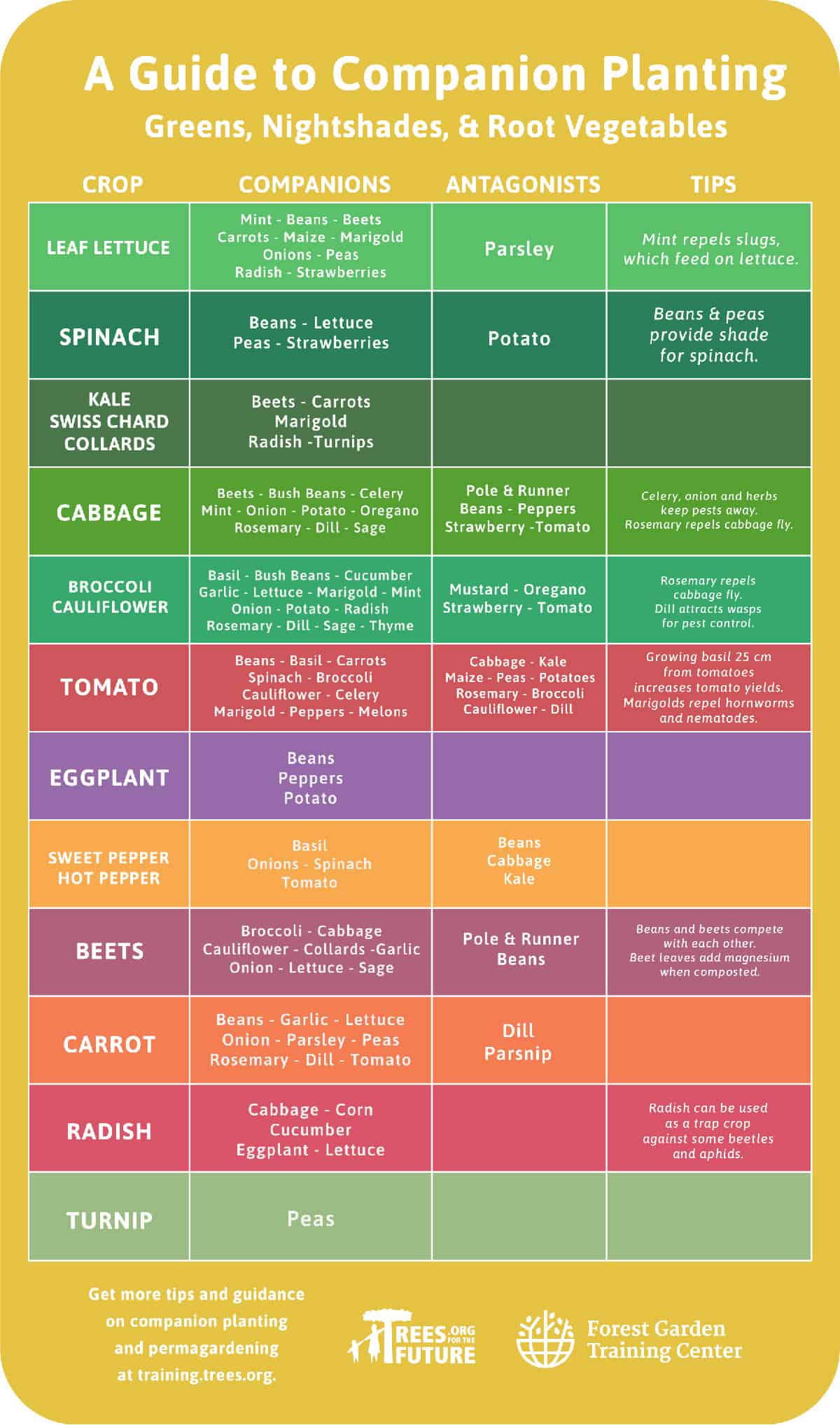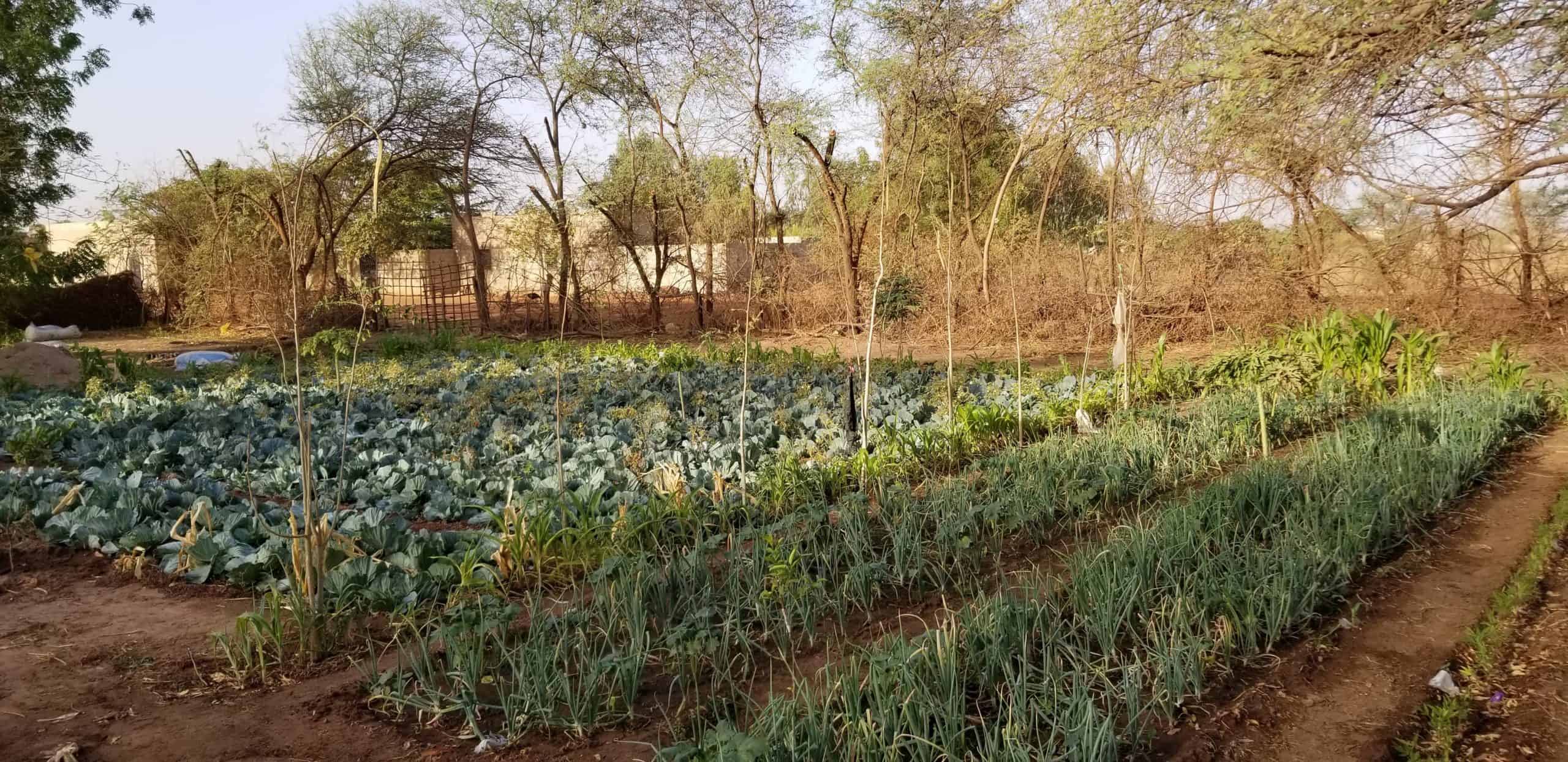Companion Planting 101
So you want to start companion planting?
You’ve come to the right place! At Trees for the Future, we’ve studied farming for more than three decades and we know that companion planting is a great, natural way to improve your farming practices.

What is Companion Planting?
Planting two or more mutually beneficial plants next to each other is known as companion planting. Companion plants are fruits, vegetables, herbs, shrubs, or flowers that provide a benefit to their neighbor through nutrients, providing shade, or protection from pests or disease. This technique is an integral part of permagardening.
A permagarden is a permanent bio-intensive garden that can protect and produce an abundance of diverse, healthy foods in a relatively small area from one season to the next. Diversification is key in any permagarden. Intercopping is planting diverse species in the same space and companion plants are sets of intercropped plants that grow well together. The Three Sisters (corn, beans, and squash) is one of the most popular companion plant combinations. The corn provides a structure for the beans to climb on. The beans provide nitrogen to the soil that the other plants need. The spreading squash creates a living mulch by blocking sunlight, reducing soil temperatures, and minimizing moisture loss and weed growth.
Being in Harmony with Nature means letting Nature Harmonize
Healthy ecosystems don’t grow like we plant. Plants don’t naturally grow in straight lines and they are not isolated from other species. A happy garden or farm has variety and that variety accomplishes a lot for both the land and the grower. In addition to supporting soil health and biodiversity, plants support one another. Companion planting recognizes and takes advantage of these harmonious relationships.
Where to Start
Determine your growing space and take into account any major environmental challenges you may face: common pests in the region, soil composition, sun exposure, etc.
When you’re planning your garden make sure to consider each plant’s physical characteristics, nutrient needs, growth rates and habits beforehand. Antagonists are plants that do not grow well together.
4 Tips When Starting Out
Use appropriate spacing – Be sure to use correct spacing when intercropping plants. Plants should not be closer than the smallest spacing requirement of the vegetables being planted.
Take advantage of plants’ differences
- Place plants with low leaf cover and compact or shallow root systems next to plants with larger leaf cover and deeper root systems.
- Mix slow-growing plants with fast-growing plants so they don’t compete. Grow plants that require lots of nutrients (heavy feeders) with those that require little (light feeders).
- Plant aromatic plants that deter pests to protect non-aromatic plants.
- Plant flowering plants with pollen and nectar that attract beneficial insects to feed on pests.
- Grow plants that attract and trap pests near your other higher-value crops
- Plant crops that grow in different ways (e.g. climbers and stalks or bushes) so that one can be supported by the other.
Work with plants from different families – In general, plants from different vegetable families are susceptible to different pests and diseases than those of other families. Companion planting dramatically reduces the potential for devastating insect loss.
Keep transplanting and seeding issues in mind – If a bed is direct-seeded it is difficult to intercrop with transplants before the seedlings sprout without disturbing seeds. Always transplant before direct seeding OR direct seed first and wait for the seedlings to break the soil surface before transplanting. Your decision will depend on the growth cycles of each plant.
A Cheat Sheet of Companion Plants
Click here to see and download a high resolution version of our companion planting guide. For planting guidelines and an in-depth explanation of companion planting and intercropping, see chapter 13 in the Forest Garden Technical Manual. Trees for the Future’s Forest Garden Training Center is a free and public resource.
